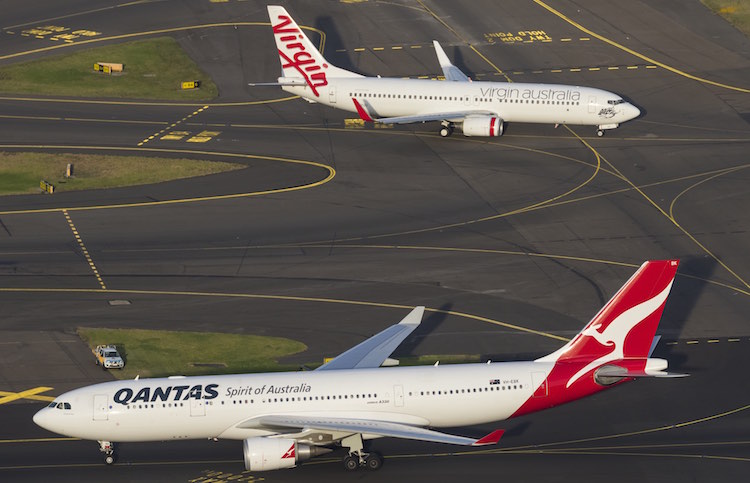 There was some relief for those forking out the big bucks for domestic business class flights in February, with fares down for the first time in a year and a half, new figures show.
There was some relief for those forking out the big bucks for domestic business class flights in February, with fares down for the first time in a year and a half, new figures show.
The Bureau of Infrastructure, Transport and Regional Economics (BITRE) measure of domestic business class airfares was at 94.9 index points in February, down slightly from 95.2 points a year earlier.
The measure had risen for the past 17 months on a year-on-year basis and reached a five-year high of 976 points in December 2016 as the corporate and government travel sector shrugged off the uncertainty surrounding the federal election and some of the global and local economic jitters of recent times.
Fares for economy tickets were broadly unchanged in February.
The best discount economy index was at 60.1 points, up from 59 points a year ago.
And the BITRE measure of restricted economy airfares rose to 79.9 points, compared with 79.5 points in the prior year.
The BITRE air fare series is a price index of the lowest available fare in each fare class, weighted over selected routes.
Virgin Australia said in a trading update on February 3 weak market conditions had hit revenues, prompting the airline to cut total sectors domestic flown by five per cent in the three months to December 31 2016.
“Subdued industry trading conditions in the domestic market continued to adversely impact revenue during the second quarter,” Virgin said in a statement to the Australian Securities Exchange (ASX).
Both Australia’s major carriers Virgin and Qantas have cut domestic capacity in recent times in an effort to improve yields and better match the number of seats in the market with demand.
Indeed, passenger figures from the International Air Transport Association (IATA) show capacity in the Australian domestic market, measured by available seat kilometres (ASK), grew by just 0.2 per cent in the 12 months to December, the latest figures for which data is available.
Demand, measured by revenue passenger kilometres (RPK), rose 1.6 per cent in that time, resulting in load factors up 1.1 percentage points to 76.9 per cent.
More broadly, global international passenger RPKs grew by 6.7 per cent in calendar 2016, compared with the prior corresponding period. The result was down from 7.1 per cent growth in calendar 2015.
IATA chief executive and director general Alexandre de Juniac said air travel was “a good news story” in 2016.
“Connectivity increased with the establishment of more than 700 new routes. And a $44 fall in average return fares helped to make air travel even more accessible,” de Juniac said in a statement.
“As a result, a record 3.7 billion passengers flew safely to their destination.”















